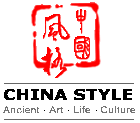Pavilions
Penglai Pavilion
Built in 1061, the sixth year of Emperor Jiayou's reign in the Northern Song Dynasty (960-1127), the Penglai Pavilion is a famous coastal tourist site in eastern China's Shandong Province. It is seated on the cliff of Danya Mountain close to the sea in the north of Penglai City.
The Penglai Pavilion is listed as one of the four famous pavilions in China, together with the Yellow Crane Tower, Yueyang Tower and Prince Teng Pavilion. Constructed with double-deck wood, it is seated on the north, facing the south, with symmetrically built side rooms and wing rooms in front of both east and west sides. Wing rooms perform the role of halls, with hallways linking side rooms and stone stairs running up the Pavilion. Its ground floor measures 14.8 meters in length, and 9.65 meters in width, with winding corridors and 16 columns surrounding all sides. Hung on the front door is a huge horizontal tablet inscribed with three Chinese characters: Peng Lai Ge (Peng Lai Pavilion), written by famous calligrapher Tie Bao of the Qing Dynasty (1644-1911).
Three huge stone tablets are embedded in the outside of the north wall of the Pavilion's ground floor. One reads Bi Hai Qing Feng (Blue Sea, Cool Breeze), written by Lu Qiguang, a renowned Qing calligrapher. Another reads Hai Bu Yang Bo (Placid Seawater), of which the word Bu was struck by a cannonball during the 1894 to 1895 Sino-Japanese war, leaving a visible scar. The third one reads Huan Qing (The Whole Qing).
In front of the wing rooms' north gable wall are three monuments, built during the reigns of Emperor Jiaqing, Daoguang and Guangxu respectively after each renovation or construction of attached buildings. To the west of west-wing room, a 2.3-meter-tall tablet is erected facing the east. Engraved on the tablet is Daoguang's Notes on Repairing Penglai Pavilion in Dengxhou, written with full power and grandeur. Inside the west-wing room, ten tablets are embedded into the west wall, with four Chinese characters on each, describing the Ten Scenes of Penglai: Sunrise on the Sea, Evening Tide under the New Moon, Countless Jade Fragments, Ten Thousand Miles of Clear Water, Pavilion in the Air, Snow Covered Peak, Mist and Clouds, Fishing and Singing on the Yuliang, Shining Waves in Well and Rain Drops from Heaven. Another ten tablets of past dynasties are in the west side room, all of which have great historiography and calligraphy values.
The second floor of the Penglai Pavilion is 13.5 meters in length and 8.55 meters in width, surrounded by winding corridors, wooden fencing guardrails and 16 columns. With wooden folding screen in the north, east and west, windows are opened in the north wall for visitors to look over the sea. On this floor, the door opens to the south. Hung above the outer side of the door is a board carved with Bi Hai Chun Rong (Blue Sea, Warm Spring), and the inner side is a board carved with Shen Zhou Sheng Jing (Scenic Spot on the Divine Land). Tie Bao's powerful handwriting Penglai Ge (Penglai Pavilion) is just hung on the center of north wall, along with Dong Biwu's inscription and Ye Jianying's couplets. The wooden roof beams are painted with colored drawings like Penglai Ten Scenes, Eight Immortals and Bamboos. With sculptures of eight drunken immortals placed in the center and an old-fashioned square table and chairs placed around, the arrangement of the room is just as what was described in the famous legend of "Eight Immortals Crossing the Sea". It is said that the eight immortals (Lu Dongbin, Tie Guaili, Zhang Guolao, Han Zhongli, Cao Guojiu, He Xiangu, Lan Caihe, and Han Xiangzi) got drunk at the Penglai Pavilion and crossed the sea by different tricks of their own without ships or boats.
The Penglai Pavilion is the best place to view two of the Ten Scenes of Penglai -- Pavilion in the Air and Fishing and Singing on Yuliang. The Pavilion high up in the air casts its invert reflection in the blue sea, with mist wrapping up the mountainside ring upon ring. It is just like a fantastic mirage written in water. Standing in the Pavilion with mist and clouds floating beneath, visitors will feel like immortals hovering over the waves against wind. Under the Pavilion, reefs rising above the sea surface are called Yuliang. Sometimes you can find old men, in groups of three or five, fishing on the reefs, happy and pleased with themselves.
Penglai Pavilion
Changyin Pavilion
Shanhaiguan Pass
Yueyang Tower
Tuan Cheng Fortress
Page 1 of 1 1
| ||
| ||
| ||
| ||
Page 1 of 1 1
